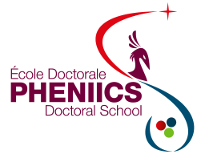Orateur
M.
Julio Arturo Rabanal Reina
(EUSO-BALLOON)
Description
The EUSO-Balloon telescope is composed by a PDM, which is a phatfinder of one of the 130 PDM the front-end of the JEM-EUSO telescope. JEM-EUSO is the telescope that have like aim the detection of the UHECR watching the Earth's atmosphere from the space (inside the Japanese module of ISS)The first focus of this work was the integration of PDM and the corresponding validation test . Inside this, the EC-ASIC components are the responsible for signal amplification and digitalization,and these were strongly affected by electrical noise system.
At this step, some adaptations and recommendations were made for the new design of EC-ASIC(SPACIROC3 based).After participating in the test validation telescope EUSO-BALLOON, I participated in the mission flight where during a night of 5 h at Timmins Ontario, the telescope successfully worked and this record the background noise and the beam of a laser carried by a helicopter to 30 km below the telescope's Balloon, which simulates the extensive air showers.
The next stage of the thesis was the participation in the absolute post-calibration of the PDM. It was essential for data analysis.
It was observed that more than 60% of the pixels had a efficiency below 15%.
For this reason in the last part of this thesis a proposal for retrieving information from these bad pixels is done, using the poor signal which corresponds to the signal of 2 photon-electrons and besides to electronic efficiency based on the analysis of the S-Curve of each pixel, independent of absolute efficiency. A complementary part around this work was the test of algorithms of trigger over light-sources which simulated the EAS, meteors and the cities, realized at Turlab -INFN/Turin.
Auteur principal
M.
Julio Arturo Rabanal Reina
(EUSO-BALLOON)



